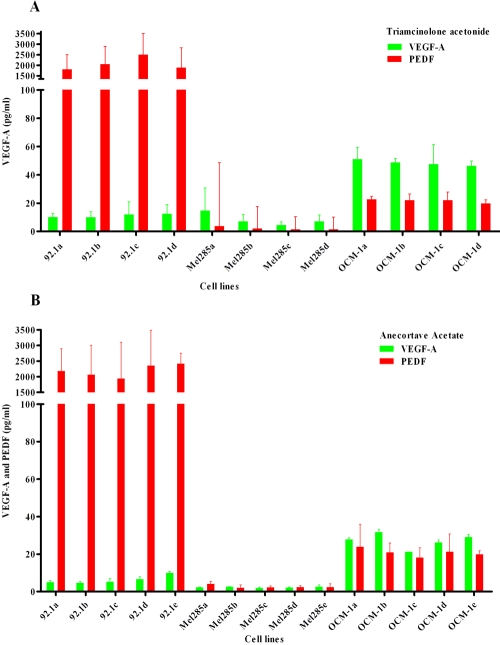Figure 2.
Production of VEGF-A and PEDF in three different UM cell lines exposed to various TA and AA doses. Cells were treated with four or five different suspensions. A: For triamcinolone acetonide (TA) experiments, we used either Park Memorial Institute/Dulbecco’s Modified Eagle Medium (RPMI/DMEM; control), RPMI/DMEM with methanol (second control), a 10 mM TA suspension, or a 100 mM TA suspension ; B: For anecortave acetate (AA) experiments, we used either RPMI (control), RPMI with dimethyl sulfoxide (DMSO; second control), 0.1 mM AL-4940 solution, 1.0 mM AL-4940 solution, or 10 mM AL-4940 solution. The level of vascular endothelial growth factor-A (VEGF-A) protein (n=2) is shown in pg/ml (mean±SD). All cell lines produced VEGF-A and pigment epithelium-derived factor (PEDF), but clear differences were observed: OCM-1 produced the highest levels of VEGF-A, while cell line Mel 285 produced the lowest amount of VEGF-A. Cell line 92–1 produced large amounts of PEDF (>2000 pg/ml). Mel 285 produced scant PEDF. Addition of TA or AA to the cell cultures had no effect on either VEGF-A or PEDF production.

